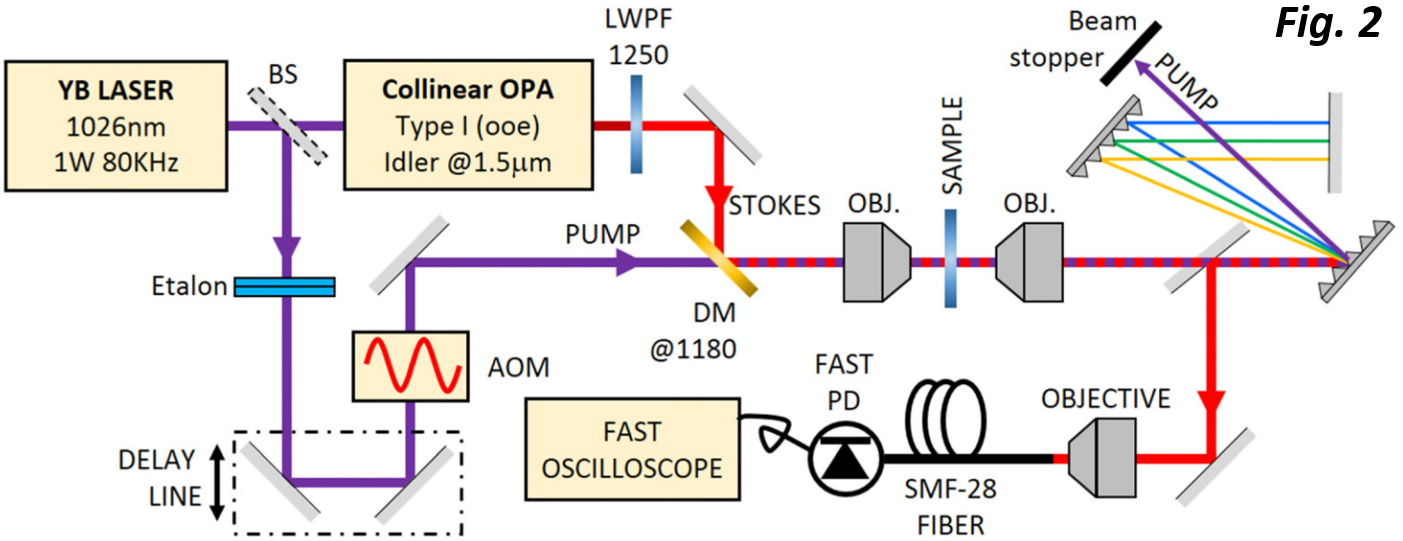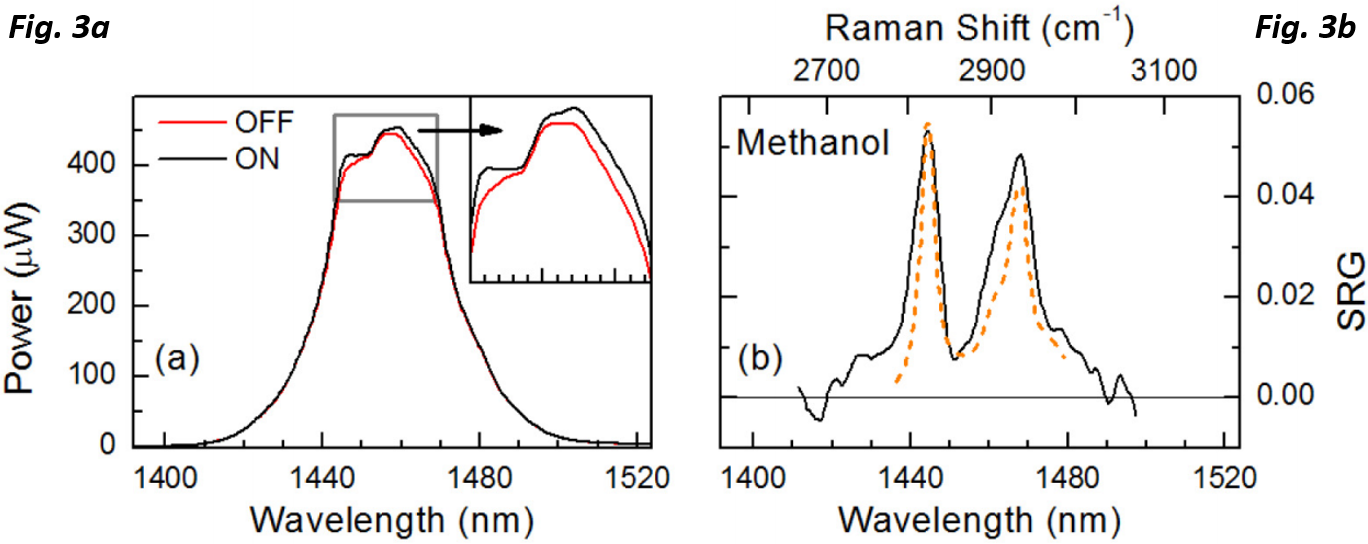We recently introduced an innovative technique [1] for performing Stimulated Raman Scattering (SRS) employing the so-called Photonic Time Stretching (PTS) approach (see ref. [2] for a review). This technique can be easily understood starting from the well-known phenomenon of spatial dispersion of light (Fig. 1a). The very same phenomenon happens also in time when light propagates in a material (Fig. 1b). This translates in the fact that, after the propagation through a few kilometers of optical fiber, different colors will be temporally separated. Very fast sampling oscilloscope, commercially available, allows one to acquire the stretched pulse in time. After proper calibration of the dispersion introduced, each point of the sampled temporal profile can be uniquely associated with wavelength. We applied this technique for the first time to the detection of very small differential signals.

We developed a setup for Raman spectroscopy (see Fig. 2) starting from an Yb:KGW laser generating 290-fs pulses at 1026 nm with 80-kHz repetition rate. We employed a narrowband Raman pump signal at the laser fundamental (1026 nm, selected by an etalon filter) and a broadband Raman Stokes centered at 1.5μms covering 400cm-1, generated by an optical parametric amplifier, OPA). The chosen Stokes wavelength enables straightforward temporal stretching in a standard SMF-28 telecom fiber. The pump and Stokes pulses, temporally and spatially overlapped, are focused on the sample and then collected through two microscope objectives. The Stokes pulse is pre-stretched using a grating pair, to decrease the pulse power and so avoid nonlinearity in the following optical fiber. The stretched pulse is then acquired in time thanks to a cutting-edge sampling oscilloscope.
The Stokes spectra with pump off (red curve) and with pump on (black curve) are plotted in Fig. 3a. The SRS spectrum of Methanol (Fig. 3b) is calculated by computing their difference and normalizing it by the unperturbed Stokes spectrum. A spontaneous Raman spectrum of methanol is also reported for comparison (orange curve).
The total measurement time to obtain this Raman spectrum is given by the time to acquire 200 shots. In the present case it was 2.5ms, limited by the 80-kHz repetition rate of the laser. However, the time needed to acquire a single spectrum is of only some tens of ns. This means that, using a laser with higher repetition rate, we could dramatically increase the acquisition speed. As an example, employing a 4-MHz repletion rate laser we could reduce the acquisition time by a factor of 50 to only 50us. It is also remarkable that the acquisition speed does not depend on the width of the Raman spectral window acquired. Employing a broader Stokes pulse, therefore it would be possible to acquire the full Raman window (fingerprint plus CH stretch) with the same acquisition time.
This result paves the way to fast detection of Broadband Raman signal.

[1] F. Saltarelli, V. Kumar, D. Viola, F. Crisafi, F. Preda, G. Cerullo, D. Polli, “Broadband stimulated Raman scattering spectroscopy by a photonic time stretcher”, Opt. Express 24, 21264 (2016). http://dx.doi.org/10.1364/OE.24.021264
[2] A.M. Fard, S. Gupta, B. Jalali, “Photonic time-stretch digitizer and its extension to real-time spectroscopy and imaging”, Laser Photonics Rev. 7, 207 (2013). dx.doi.org/10.1002/lpor.201200015
